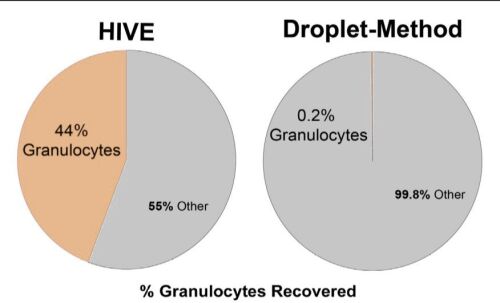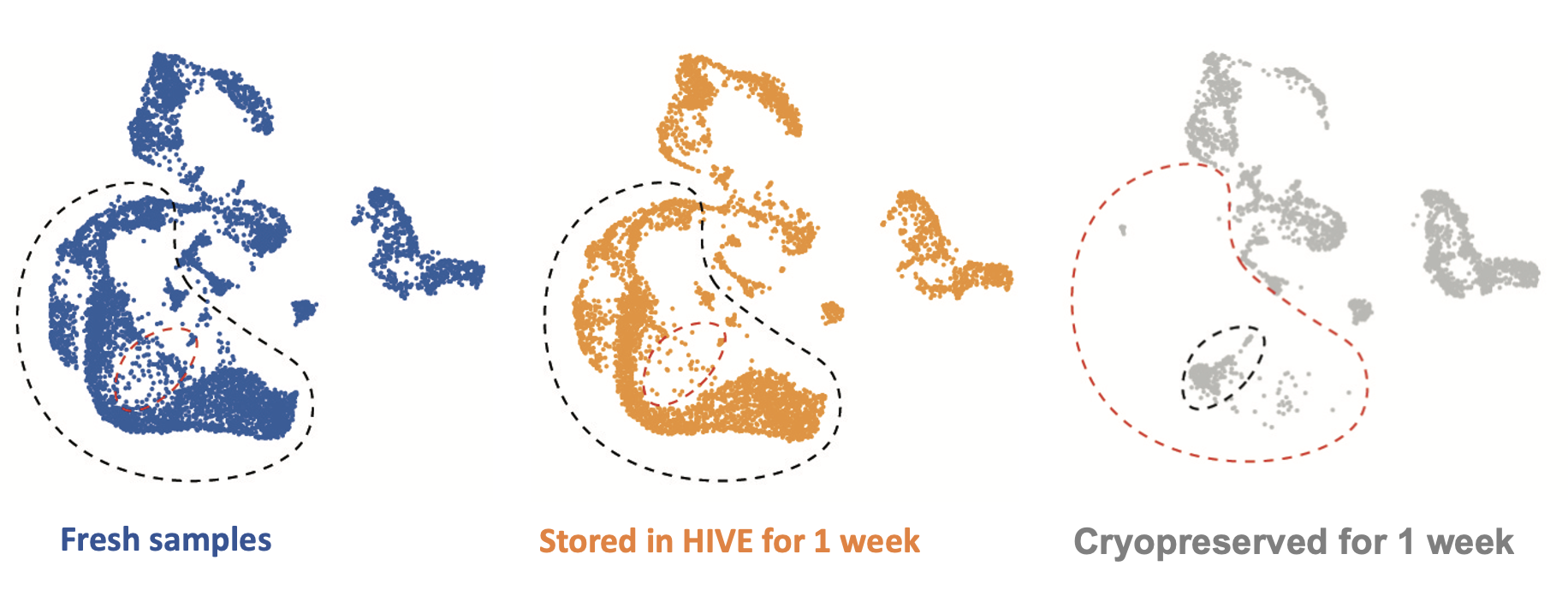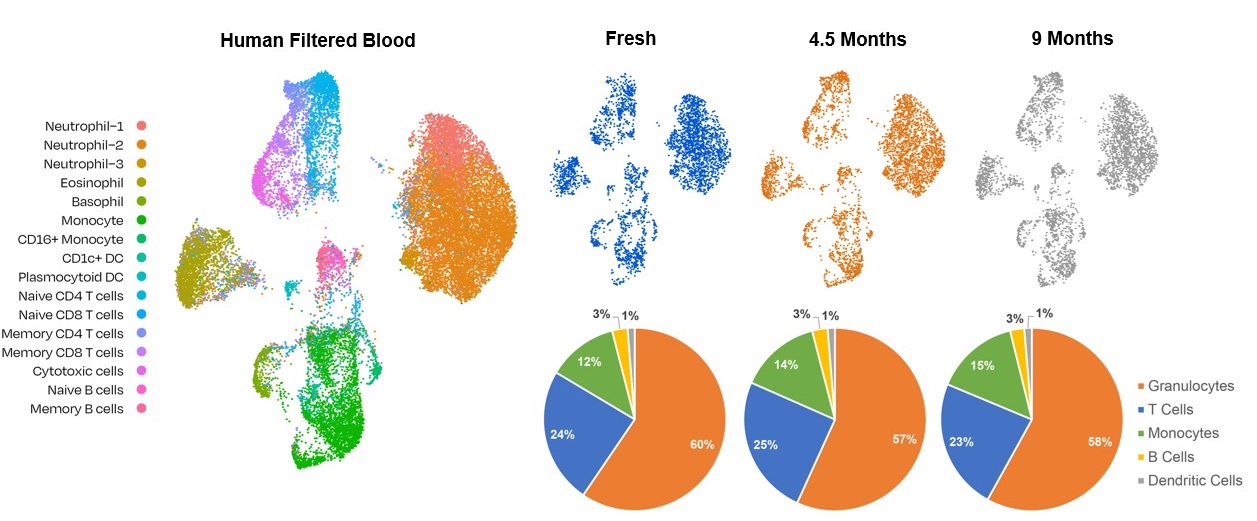See All Your Cells
Recover complete biological information from your sample, preserve those fragile or delicate cells lost with other methods

Cells isolated using the HIVE settle gently into picowells, avoiding elevated pressures or microfluidic shear forces common in other methods. Download our example dataset.
A researcher has been attempting to recover neutrophils from whole blood clinical samples. He has been struggling to recover neutrophils with current microfluidic platforms in the lab, but the HIVE’s gentle capture of cells enables him to generate data for neutrophils and other fragile cell types.
Any where, Any time
Capture cells wherever and whenever they are available and store without compromising data quality, remove time course batch effects by running samples together

UMAP plots from HIVE devices processed fresh (blue), after storage in the HIVE collector for 7 days (orange), or after cryopreservation for 7 days (gray)
A clinical researcher is collecting bone marrow biopsies in a remote location where specialized equipment for single cell processing is not available, requiring cryopreservation and shipment to her colleagues overseas. Because the samples are not processed fresh some data quality is lost. With the HIVE, she can capture her samples at any time, then store her cell-loaded HIVE(s) until all samples are ready for processing overseas together, now with comparable data quality as if they had been processed fresh.
Flexible Work Flow
Process now or store for later, same data quality

Data represents retention of sample diversity when cells captured with the HIVE are processed fresh, and after storage in the HIVE at -20C for 4.5 months and 9 months prior to processing
A Principal Scientist involved with Small Molecule Drug Discovery is interested comparing how different doses effect his tissue samples in a mouse model time course study. If he runs them fresh at each timepoint he needs to correct for day-day and/or user-user data discrepancies, when he collects his samples with the HIVE(s) he can store them safely and wait to process them all together at the end of his study minimizing any batch effects.